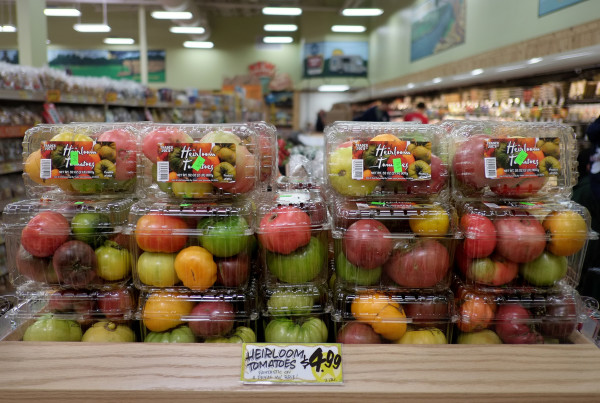The sun is barely up in rural Pecos County – and Whitney Smalley is already hard at work at Mesa Vineyards – the state’s biggest winery and vineyard. It’s on the edge of the Chihuahuan Desert.
Smalley is one of about 30 full-time workers who help turn 200 acres of grapes into about 600 thousand cases of Ste. Genevieve wine every year.
The harvest is in full swing – but nobody’s out picking grapes by hand. Tractors roar through the fields, scooping up the grapes and trucking them over to a 70-thousand square foot building – where industrial-grade equipment will turn them into wine.
Growing grapes in the desert might sound like a bad idea – but there’s actually plenty of underground water here for farming – and the vines really don’t need that much.
The vineyard pumps about 3,000 acre-feet from the Edwards-Trinity Aquifer a year – compared to the 30 or 40 thousand a nearby Pecan orchard uses.
But the vineyard’s manager Jean-Michel Duforat says while it’s not necessarily hard to farm in the desert – it’s not easy either. This part of the state is prone to hail storms and freezes.
“So that’s a some kind of little challenge here – the weather here in Texas last year, a lot of people lost their crop, you know we lost our crop last year.… it is not easy at all – it’s an adventure,” Duforat says.
An adventure that started as an experiment.
The University of Texas owns the land the vineyard sits on – along with about two million acres across the state. Since the 1800s, the university — and its rival A&M – have gotten royalties from oil and gas, farming and wind power on all that land.
In the ‘70s, the university started growing grapes here – just to see if it could be done – but also to diversify where that money was coming from.
Duforat came here in the ‘80s – when the UT research ended and a French company came in to lease the land and set up shop.
He says back then – people in the are didn’t really care about wine.
“Well, it’s uh, mainly where we are here in West Texas, people was drinking beer, they still drink beer,” Duforat says. “Now, I have to say, I did convert some people to drinking wine.”
Texans have been converting ever since, but it took a couple decades for the industry to really take off.
Debbie Reynolds is the head of the Texas Wine and Grape Growers Association – an industry trade group.
“The growth has actually come since the early 2000s to now – is when you’ve seen the bulk of the wineries open in Texas,” Reynolds says.
Still, Ste. Genevieve isn’t exactly the type of wine people are getting more interested in – it’s cheaper, sold in bigger bottles. Reynolds describes it as “dependable.”
Consumers are getting more into the fancier stuff – and Patrick Prendergast, President of Mesa Vineyards – says his company is responding to that.
“They’re spending a little bit more money on wine – they’re looking for something that’s more niche – they’re trying to understand where the wine comes from, where it’s grown – and they’re learning a lot. We’re growing in that way too,” Prendergast says.
He says the company’s finer wines like its Peregrine Hill brand – are growing three times faster than Ste. Genevieve.
But while the market’s growing – the industry as a whole is at a crossroads.
“The only thing we need is more grapes,” Duforat says. “We don’t have enough grapes to supply the demand that there is in Texas, so we need to have more growers – you can build 1,000 wineries in one year – but if you don’t have the grapes, that’s not gonna be no good for nobody.”
Some Texas farmers see that as an opportunity – they’re now planting grapes alongside crops like cotton and corn.















